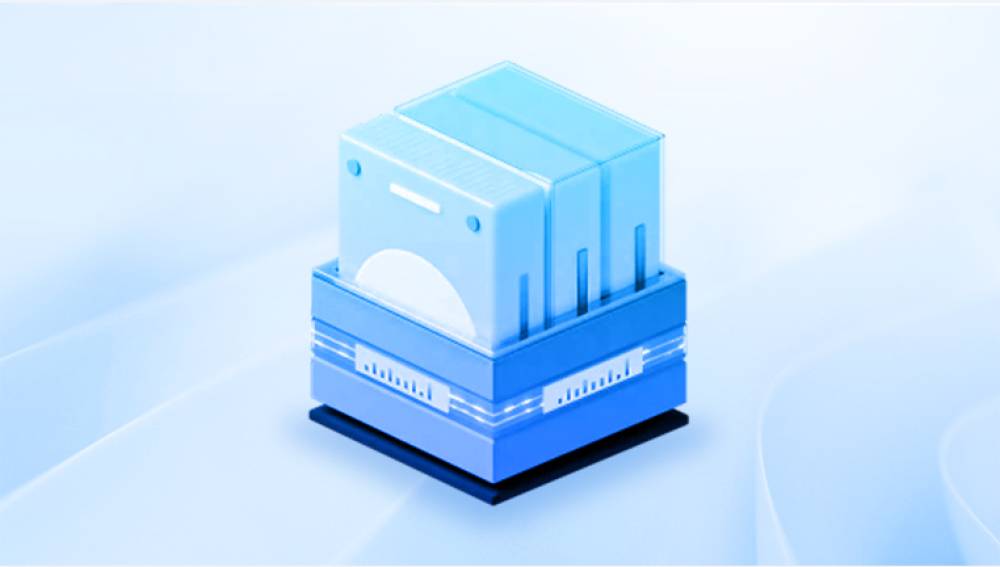Additionally, it compares the costs associated with different data recovery service providers and offers insights into what consumers can expect when facing the need to retrieve lost data. By understanding the intricacies of data recovery costs, individuals and businesses can make more informed decisions when it comes to safeguarding and retrieving their valuable data.
1. Hard drive cost
However, hard drives are not immune to failure, and when they do, the cost of data recovery becomes a significant concern. Whether it's due to physical damage, logical errors, or accidental deletion, the process of retrieving lost data can be complex and expensive. This article aims to provide a detailed overview of the cost factors involved in data recovery from hard drives.
2. Types of Hard Drive Failures and Their Impact on Cost
2.1 Physical Failures
Physical failures of hard drives can occur due to a variety of reasons, such as mechanical malfunctions, water damage, or impact. When a hard drive experiences a physical failure, the cost of data recovery is typically higher compared to logical failures. This is because physical failures often require specialized equipment and cleanroom facilities to access and repair the drive.

For example, a hard drive with a damaged read/write head may require the head to be replaced in a cleanroom environment. The cost of cleanroom services alone can be substantial, ranging from a few hundred to several thousand dollars. Additionally, the process of replacing the head and extracting the data requires skilled technicians and advanced data recovery tools, which further adds to the cost.
Another type of physical failure is a damaged platter. If the platter, which is the surface where data is stored, is scratched or damaged, the data may be inaccessible. In some cases, data can still be recovered from a damaged platter, but it requires more advanced techniques such as imaging the platter at a microscopic level. This type of data recovery is highly specialized and can be extremely expensive.
2.2 Logical Failures
Logical failures are caused by software issues, such as file system corruption, virus infections, or accidental deletion. While logical failures are generally less expensive to fix compared to physical failures, the cost can still vary depending on the severity of the problem.
For instance, if a hard drive has a corrupted file system, the data recovery process may involve using software tools to repair the file system and extract the data. This type of recovery can be relatively inexpensive, especially if the data is not severely damaged. However, if the file system is severely corrupted or the data has been overwritten, the cost may increase as more advanced techniques may be required.
Virus infections can also cause logical failures, and the cost of data recovery depends on the type of virus and the extent of the damage. Some viruses may simply encrypt the data, which can be decrypted using specialized software. In such cases, the cost of data recovery may be relatively low. However, if the virus has deleted or corrupted important system files, the cost may be higher as it may require reinstalling the operating system and restoring the data from backups.
3. Data Recovery Techniques and Their Cost
3.1 Software-Based Data Recovery
Software-based data recovery is the most common and least expensive method of recovering data from a hard drive. There are many data recovery software tools available in the market, both free and paid, that can be used to recover data from logical failures.
The cost of software-based data recovery depends on the type of software used. Free data recovery software may be sufficient for simple data recovery tasks, such as recovering accidentally deleted files. However, for more complex logical failures, such as file system corruption, paid software may be required. The cost of paid data recovery software can range from a few tens of dollars to several hundred dollars, depending on the features and capabilities of the software.
It's important to note that software-based data recovery may not be effective for all types of data loss situations. For example, if the hard drive has a physical failure, software-based recovery will not be able to access the data. In such cases, more advanced data recovery techniques, such as physical data recovery, will be required.
3.2 Physical Data Recovery
Physical data recovery is a more complex and expensive process compared to software-based data recovery. It involves accessing the physical components of the hard drive, such as the read/write heads, platters, and circuit boards, to retrieve the data.
As mentioned earlier, physical data recovery often requires specialized equipment and cleanroom facilities. The cost of cleanroom services can be a significant portion of the overall cost of physical data recovery. Additionally, the process of repairing or replacing damaged components and extracting the data requires skilled technicians, which also adds to the cost.
The cost of physical data recovery can vary widely depending on the type of hard drive, the extent of the physical damage, and the data recovery service provider. In general, the cost of physical data recovery can range from a few hundred dollars for minor repairs to several thousand dollars for more complex cases.
3.3 Forensic Data Recovery
Forensic data recovery is a specialized type of data recovery that is often used in legal and investigative situations. It involves the use of advanced techniques and tools to recover data that has been deleted, encrypted, or otherwise hidden.
The cost of forensic data recovery is typically higher compared to other types of data recovery due to the specialized nature of the work. Forensic data recovery requires highly trained technicians with expertise in forensic science and data recovery. Additionally, the process may involve the use of specialized software and hardware tools, as well as the need to maintain a chain of custody to ensure the admissibility of the data in court.
The cost of forensic data recovery can range from several thousand to tens of thousands of dollars, depending on the complexity of the case and the amount of data that needs to be recovered.
4. Factors Affecting the Cost of Data Recovery Services
4.1 Data Recovery Service Provider
The choice of data recovery service provider can have a significant impact on the cost of data recovery. Different service providers may have different pricing structures, depending on their level of expertise, the type of equipment they use, and their location.
Some data recovery service providers may offer a flat fee for certain types of data recovery services, while others may charge based on the complexity of the case and the amount of data that needs to be recovered. It's important to compare the prices and services offered by different providers before making a decision.
In addition to price, it's also important to consider the reputation and experience of the data recovery service provider. A reputable provider with a proven track record of successful data recoveries is more likely to provide high-quality services, even if they may be slightly more expensive.
4.2 Hard Drive Type and Model
The type and model of the hard drive can also affect the cost of data recovery. Different hard drive manufacturers may use different technologies and components, which can make the data recovery process more or less difficult.
For example, some older hard drive models may be more difficult to recover data from due to their age and the limitations of the technology at the time of their manufacture. Additionally, some hard drive models may be more prone to certain types of failures, which can also affect the cost of data recovery.
The cost of data recovery for external hard drives may also be different compared to internal hard drives. External hard drives often have additional components, such as enclosures and interfaces, which may need to be removed or repaired during the data recovery process.
4.3 Amount of Data to be Recovered
The amount of data that needs to be recovered is another important factor that can affect the cost of data recovery. In general, the more data that needs to be recovered, the higher the cost will be.
This is because the data recovery process involves scanning the hard drive for lost data and extracting it. The more data there is to scan and extract, the more time and resources it will take, which will increase the cost.
Some data recovery service providers may charge based on the amount of data that is successfully recovered, while others may charge a flat fee regardless of the amount of data. It's important to understand the pricing structure of the service provider before agreeing to a data recovery service.
4.4 Urgency of the Recovery
If the data recovery is urgent, the cost may be higher. This is because data recovery service providers may need to prioritize the case and allocate additional resources to complete the recovery in a shorter period of time.
For example, if a business needs to recover critical data as soon as possible to avoid significant losses, they may be willing to pay a premium for expedited data recovery services. The cost of expedited services can vary depending on the service provider and the amount of time required to complete the recovery.
5. Comparing Data Recovery Costs
5.1 DIY vs. Professional Data Recovery
One option for data recovery is to attempt it yourself using DIY data recovery software or tools. While DIY data recovery can be a cost-effective option for simple data loss situations, it also comes with risks.
If you are not experienced in data recovery, there is a risk of causing further damage to the hard drive, which can make the data recovery process more difficult and expensive. Additionally, some DIY data recovery tools may not be able to recover all of the lost data, especially in cases of complex logical or physical failures.
Professional data recovery services, on the other hand, are more expensive but offer a higher chance of successful data recovery. Professional data recovery service providers have the expertise, equipment, and experience to handle a wide range of data loss situations, including physical and logical failures.
5.2 Comparing Data Recovery Service Providers
As mentioned earlier, the cost of data recovery can vary widely depending on the data recovery service provider. To get an idea of the average cost of data recovery, it's a good idea to compare the prices and services offered by different providers.
You can start by researching data recovery service providers online and reading reviews from their customers. This can give you an idea of the quality of their services and the level of customer satisfaction.
Once you have identified a few potential service providers, you can contact them and ask for a quote for your specific data recovery needs. Make sure to provide them with as much information as possible about the hard drive, the type of failure, and the amount of data that needs to be recovered.
By comparing the quotes from different service providers, you can get a better understanding of the average cost of data recovery and make an informed decision about which provider to choose.
The cost of data recovery from a hard drive can vary widely depending on a number of factors, including the type of failure, the data recovery technique used, the data recovery service provider, the hard drive type and model, the amount of data to be recovered, and the urgency of the recovery.
While data recovery can be expensive, it's important to remember that the cost of losing valuable data can be even higher. Whether you are an individual or a business, it's important to take steps to protect your data and have a plan in place in case of a hard drive failure.
If you find yourself in need of data recovery services, it's important to do your research, compare the prices and services offered by different providers, and choose a reputable provider with a proven track record of successful data recoveries. By understanding the cost factors involved in data recovery, you can make an informed decision and ensure that your valuable data is recovered as quickly and cost-effectively as possible.




